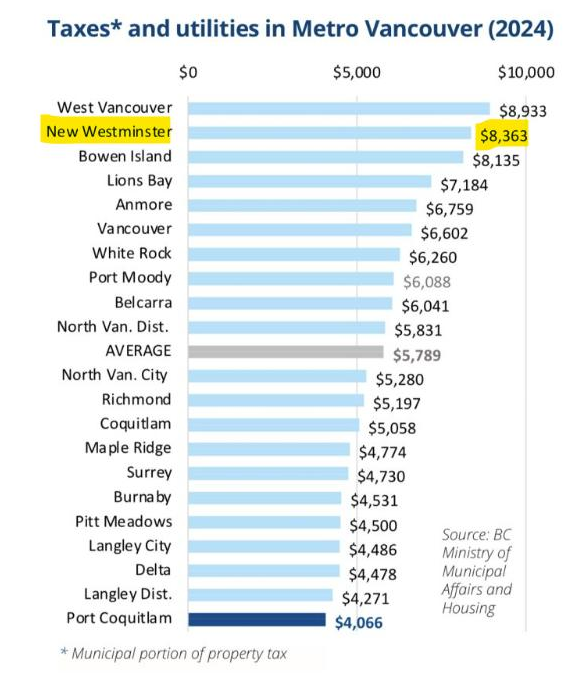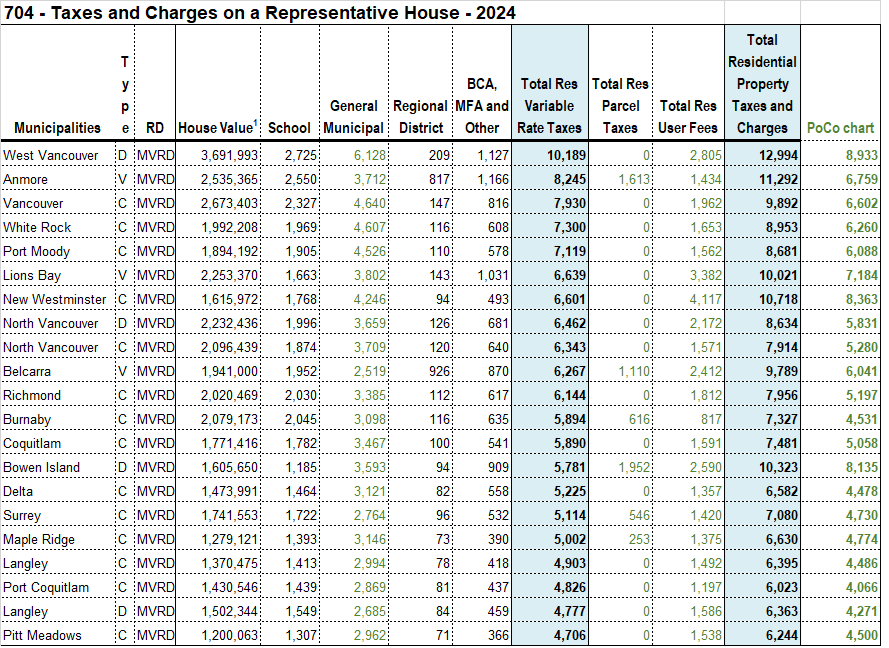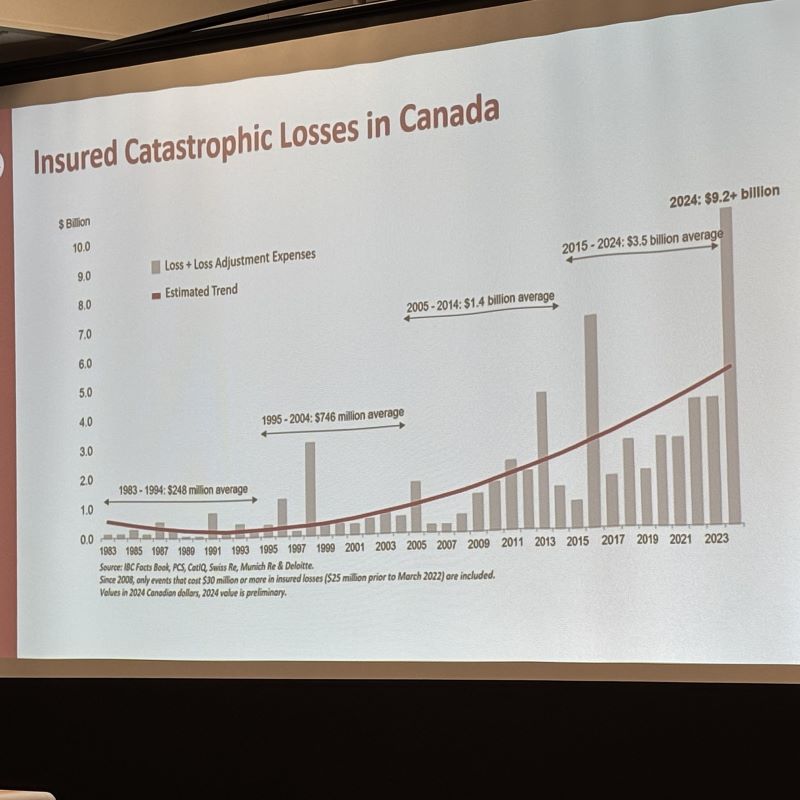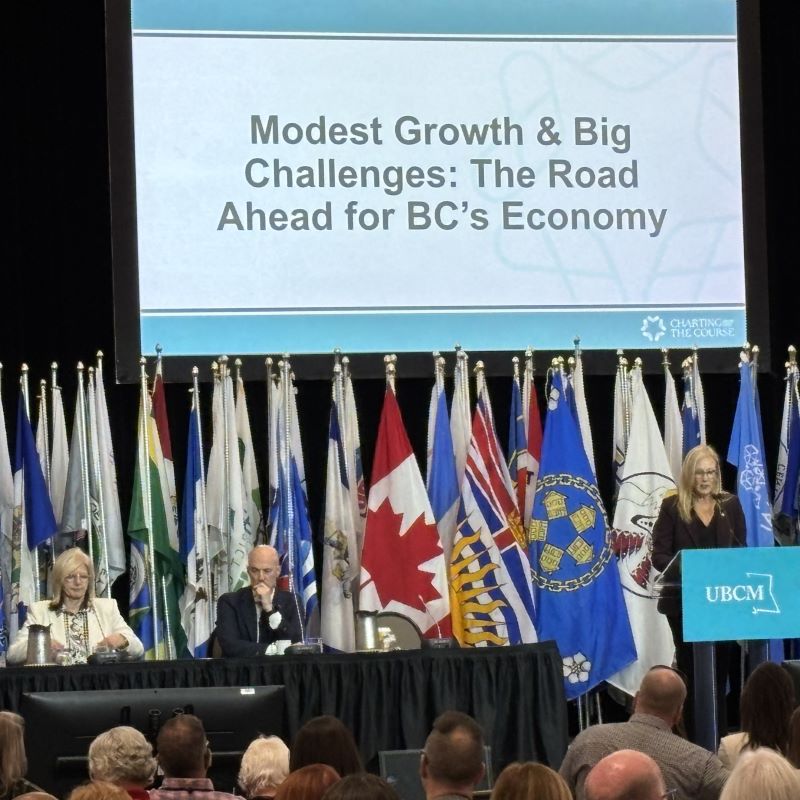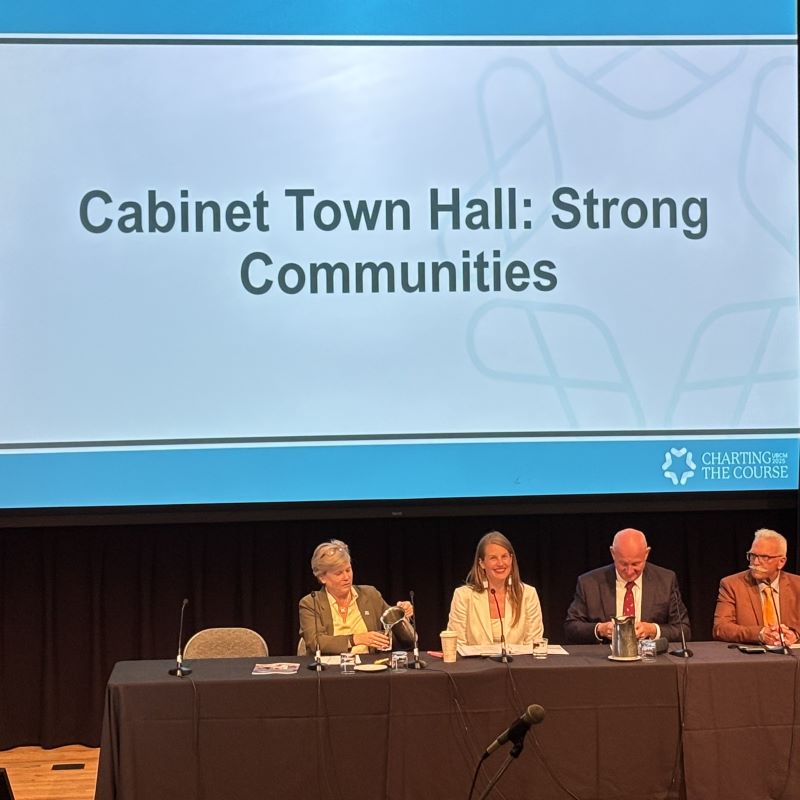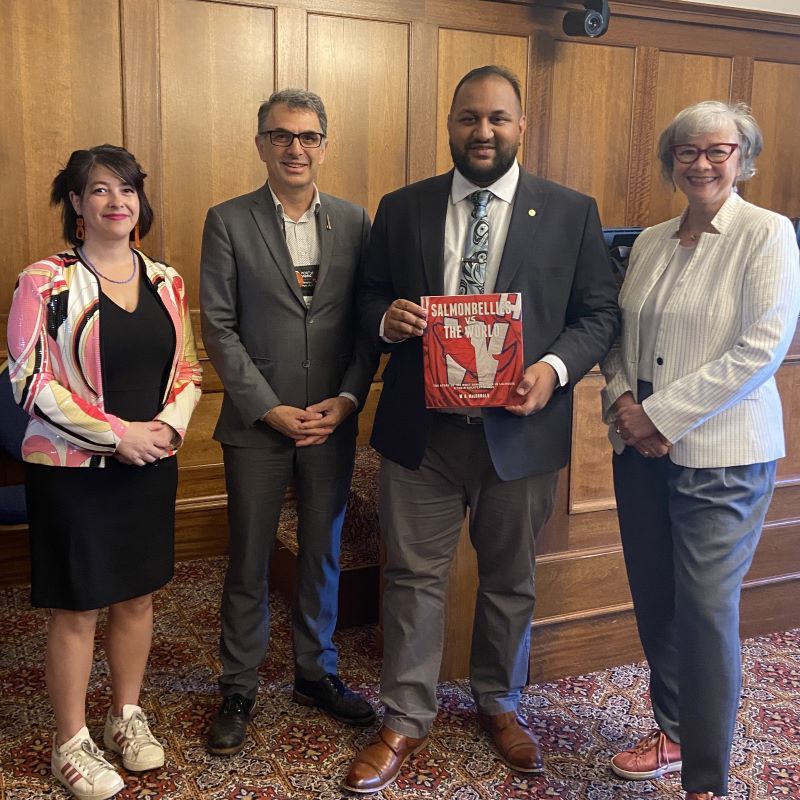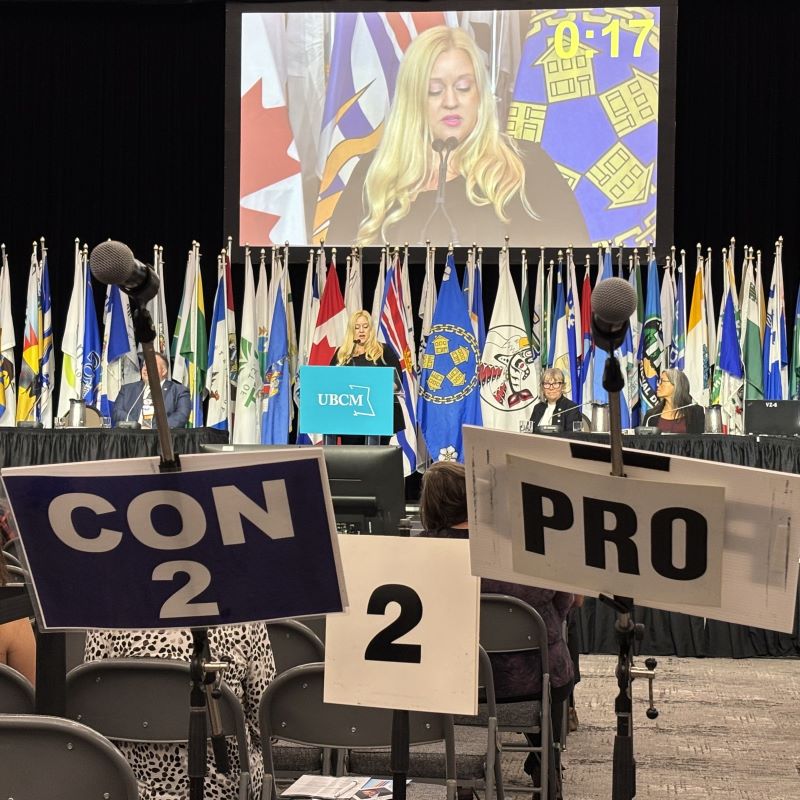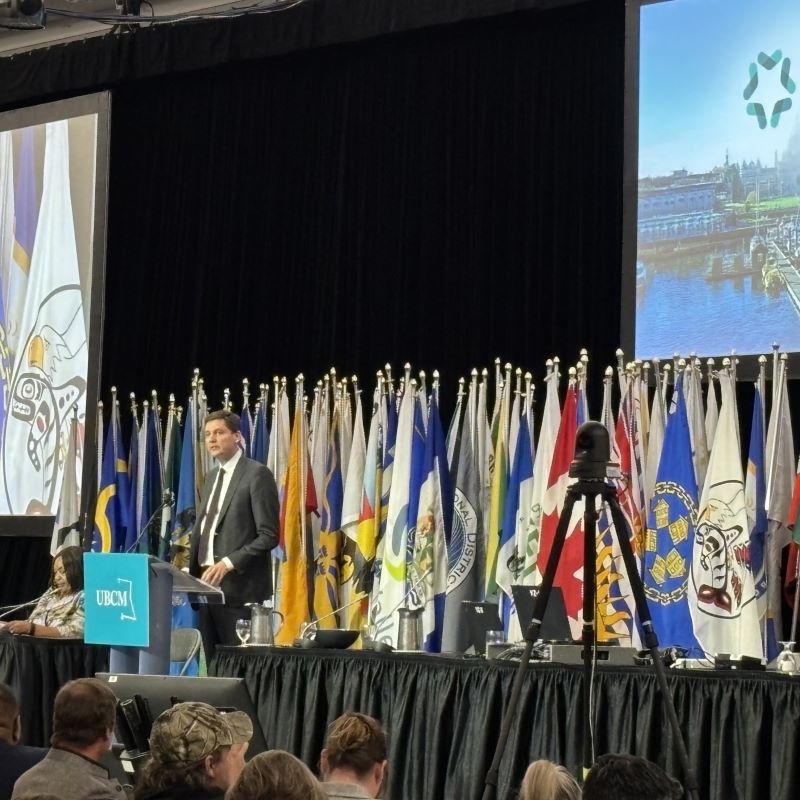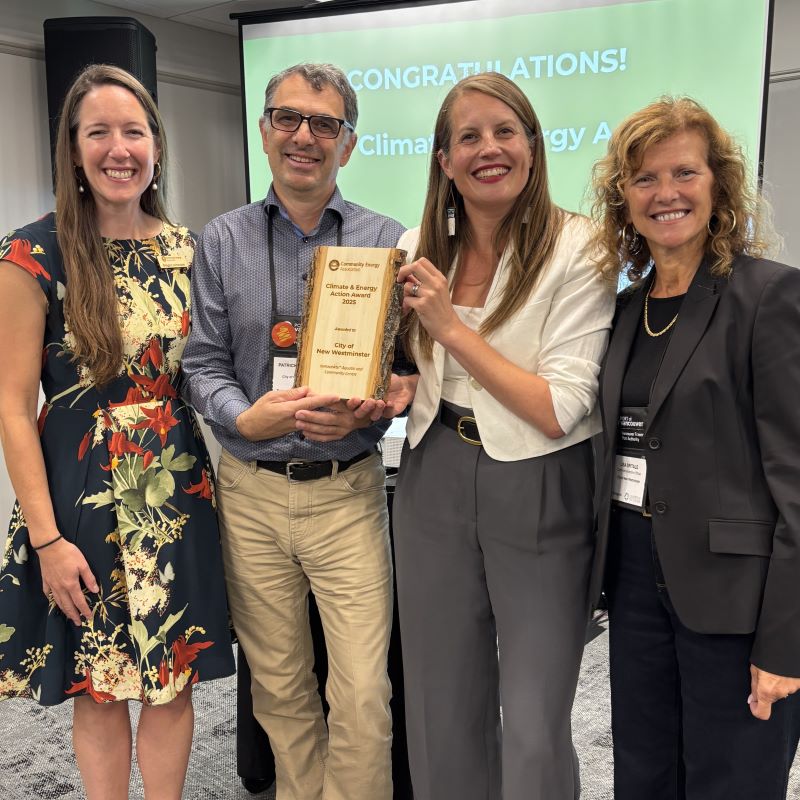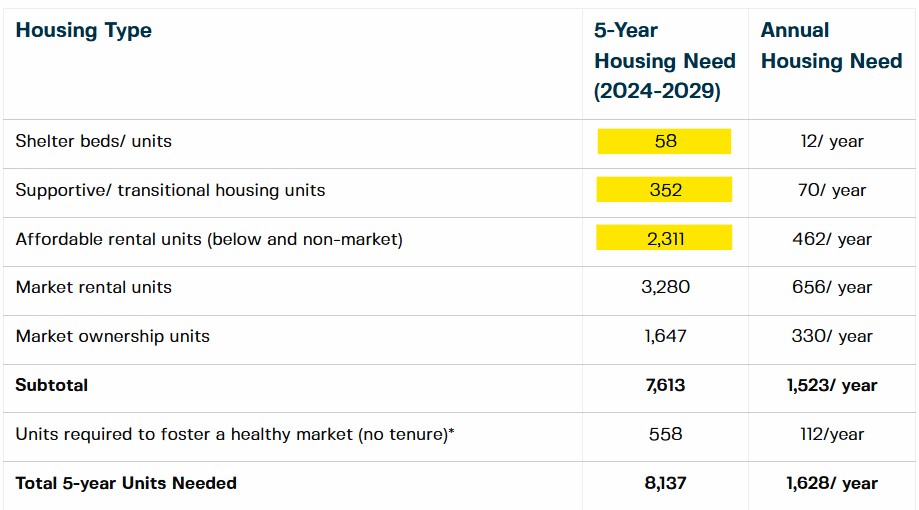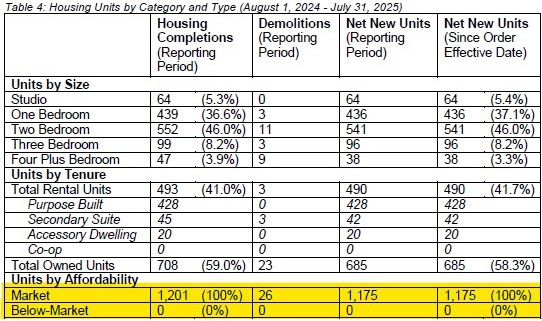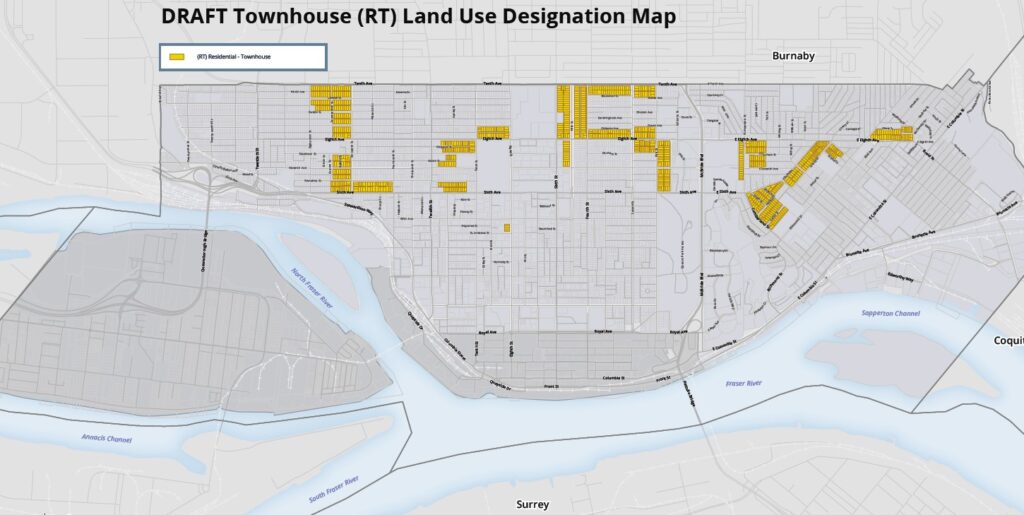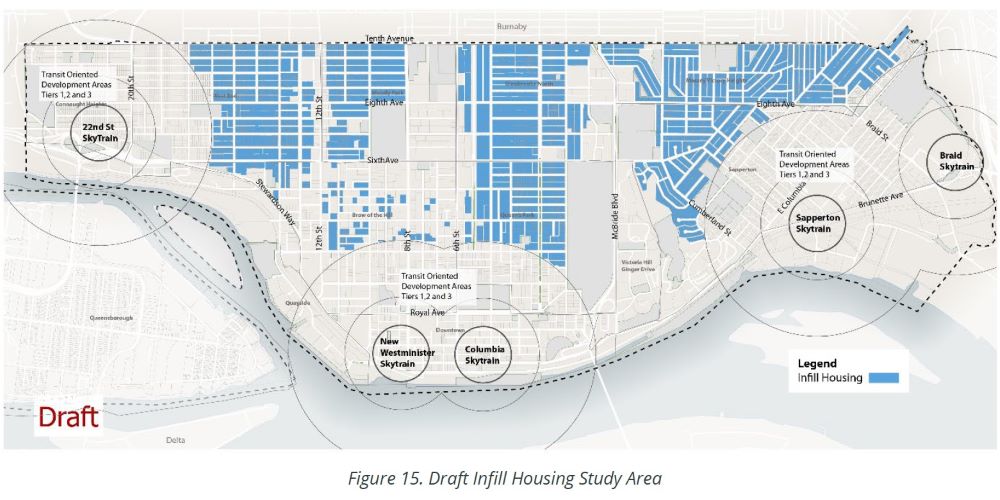We had a relatively short Council meeting, but one full of inspiration as we received two presentations from people doing great things in our community – one about a reconciliation initiative in City Hall and one about the great work a refreshed Tourism New West is doing to promote local businesses. You can watch the video here (though there were some early technical issues), because I am going to keep this report limited to the parts of the Agenda where Council made some decisions:
We started with one piece of Unfinished Business:
Rezoning and Special Development Permit Applications: 801 Columbia Street
This project proposal was discussed in Council last meeting, and after some discussion around Council, it was decided to defer the feedback to staff and the developer until staff had an ability to comment on some of the Council feedback.
There were some good parts of this application: a market rental building adjacent to a SkyTrain station with no residential parking is aligned with provincial and city goals for the next generation of transit oriented development, and preferable to an empty lot in the center of our downtown. However, it is a small lot (8,700 square feet is about the size of two regular single family home properties), and at 42 stories this would be the third tallest building in the city, resulting in by far the highest density lot in the City (FSR of 32.5). That small footprint mean fewer units (about 300) than some other rental buildings the City has approved, but it would still meet our family-friendly housing policy (at the time of application) with 30% two- and three bedroom units.
Feedback from Council centred around the ground expression of the building more than height or density, as is appropriate for a spot in the centre of a dense downtown adjacent to SkyTrain, including how access to the SkyTrain station would be secured, and some discussion of community-service uses the building. But there was some serious concern related to the buildability of the project. So Council sent a list of expectation to the developer, and they can determine if there is a viable project of this scale for the site.
We then moved the following items on Consent:
Amenity Cost Charges and Other Reserve Funds Establishment Bylaws and Development Cost Charges Reserve Funds Amendment Bylaw
Back in August, Council gave three readings to an updated Bylaw that changes how Development Cost Charges (the money we get from new developments to pay for infrastructure required to support that development, like sewers, water, transportation and parks space) and Amenity Cost Charges (the money we collect to pay for expanded amenities like recreation centers and libraries) are collected in the City. The regulations around DCCs and ACCs require us to set up specific Reserve Funds to put the money collected, and to draw from when that infrastructure is built in order to keep the process transparent and accountable. The various Bylaw changes here fold up the old reserve funds related to the previous DCC model, and transfer the value to the new DCC funds, along with establishing an ACC fund.
Application Review Framework for Instream Development Applications
With last year’s “Bill 46”, the province changed the rules about how Cities can collect community amenity benefits from new developments, replacing the Community Amenity Contribution (CAC) and Voluntary Amenity Contribution (VAC) model with a more transparent and accountable (but bureaucratic) ACC model, and Cities are required to update their Bylaws and shift to the new model by June 30, 2026. However, there are no instructions from the Province on how to address any applications that are “in stream” – or part way through the review process on that transition date, when the old model is no longer legally permissible, but there has been a lot of work done by the city and developer –sometimes years of work – based on that old model, and intruding the new model may crash the project completely, because it is not what the project financing we built on.
Staff have developed a transparent, principled, and accountable model for managing instream applications that tried to keep everyone whole as best as possible, while also not resulting in the City getting left holding the (monetary) bag because of provincial regulatory changes. Developments will have the opportunity to “fast track” earlier approvals, even if they are incomplete, to get in on the previous funding model, but will do so with a pretty strict covenant agreeing to meeting City requirements that the “fast tracking” did not provide time to address. Or developments can withdraw and re-apply under the new funding model. To meet what is a legislated timeline by the province, the City have created a process timeline for developments, meaning that both the developer and the city will need to commit to meeting these “stage gates” for a project to move forward.
It is a bit complicated here, but short version is we are trying to find a principled way to get through this uncomfortable transition at a time when the building market is facing serious headwinds, but we also have a fiscal responsibility to the community at large that we need to assure is protected through this process.
Development Approvals Procedures Bylaw No. 5658, 1987 Amendment Bylaw No. 8512, 2025 for Consideration of Three Readings
This Bylaw relates to the one above, and essentially lays out the procedures for receiving and reviewing development applications, what applications must contain, where authority is delegated, and timelines for applications and review. This amendment makes some language changes that are mostly bookkeeping (the name of the delegated authority’s position has changed, for example), but also includes some stricter provisions around application revisions and clarity around expected timelines for application requirements to be met.
Response to Council Motion Regarding the Riverfront Vision Update
The idea of connecting Pier Park to Sapperton landing park with a safe separate Multi-use Path has been in the books for a while, and besides some technical hurdles that will require some creative engineering to address, there have been some jurisdictional challenges between the Pattullo Bridge replacement project, private lands, the Port and Railways, and the recognition of the importance of this site for host first nations.
But with the Pattullo project wrapping soon, and some other advances, it is timely for us to talk to the Port and the Ministry of Transportation around their temporary pier infrastructure for those projects, and potential synergies. This part of the review of the 2016 Riverfront Vision, and in response to the recent motion from Councillor Campbell.
We then addressed these items Removed form Consent for discussion:
Proposed 2026 Council Meeting Schedule & Appointment of Acting Mayors 332
We have to approve a Council schedule for next year, including our standard every-second-Monday (except holidays) Council meetings, and now more common alternate-Monday workshops. It is worth noting that the time we spend meeting has increased remarkably this Council term, in part because we have chosen to include all Council in a lot of discussion that would have been dealt with in subcommittees or task forces in previous terms. This does reflect a notable increase in work load for most of Council, but I think that will be something for the next Council to discuss, as this hyper-engaged Council seems to like the work load/engagement balance we are at right now.
We are also re-upping the Acting Mayor rotation for next year. There were some concerns raised about the politicization of the Acting Mayor role, another very weird activity this year which is, ultimately, slightly comical self-aggrandizing I don’t see happening in any other municipality where the role is rotated to all members like in New West.
In the end, Council agreed to defer the schedule discussion until next meeting in the hopes Councillor Fontaine can attend and raise any concerns with the schedule.
Short-Term Approach for Closing Priority Gaps in the Pedestrian Network in Queensborough
The city has been talking to the Queesnborough community about prioritizing sidewalk and other pedestrian improvements after a workshop late last year where Council committed to some investments here. These are largely the low-lying areas of Q’Boro where there is still a lot of open drainage network to deal with flood risk.
Several identified priority routes are already scheduled for paving in the next year, so pedestrian improvements will come along with that paving, and three more (Dawe, Campbell and Salter) were discussed with the community as extra treatments are proposed for “Quick win” improvements – using light and relatively cheap materials to separate modes and make walking more comfortable. The pop-up events in Q’Boro and a Be Heard survey turned very positive responses for two of the streets, and mixed response on the Dawe Street design (so it will be deferred for now). Further parking restrictions are being considered on Sprice Street, as parking on both sides of the road have impacted fire access.
We then had some new items referred From Committee:
Addition of Massey Victory Heights Streetlights to Heritage Register
The Community Heritage Commission recommends that the existing streetlights in Massey Victory Heights be added to the Heritage Register. It’s been a while since something like this has been added to the register, and as they are engineering assets that have a public safety component, it was prudent that Council referred this back to staff to understand the engineering and financial implications.
Community Heritage Commission Mandate and Scope of Authority
The Community Heritage Commission also recommended some pretty substantial changes to their Terms of Reference. It’s a bit of a strangely-worded recommendations (the “scope of authority” of the CHC is defined by the Local Government Act, not Council) and there is some pretty challenging overreach here if the recommendation was to be read literally (Asking a small group of volunteers to review and approve every proposed change to any streetscape in the City would significantly impair our ability to do the basics of running a city), but the TOR for the CHC is showing its age. With recent provincial legislative changes for housing resulting in OCP updates, the introduction of the Heritage
Input from School District No. 40 on New Development Applications Recommendation
There is a Joint Working Group where members of the Board of Education and City Council discuss issues of common interest, which right now is mostly about new school locations. These conversations often overlap with new development planning in the community, and currently it is the OCP stage where the School District has formal input in to longer-term City panning, there is a desire to formalize some discussion around larger developments in the City as opposed to the somewhat ad hoc process in place now. Staff will work to develop some protocols here.
And we had a couple of Motions from Council:
Public Post Service
Submitted by Councillor McEvoy
WHERAS the Federal Government, in the midst of a labour dispute, has announced drastic cuts to our treasured public post office – eliminating good jobs, ending door-to-door delivery, removing the moratorium protection on post office closures, and changes to delivery standards for the mail; and
WHEREAS the Federal Government has done this without meaningful public consultation and has made this decision unilaterally prior to a planned Canada Post Corporation Review from October 1, 2025 to March 31, 2026, effectively eliminating any opportunity for input from the people who will be most affected; and
WHEREAS New Westminster and all local governments rely on affordable and reliable public post services to connect important information to their community, and our ability to communicate would be significantly harmed and local property taxpayers unfairly burdened if these drastic cuts to the nation’s public postal service are implemented; and
WHEREAS it is crucial for the Government to hear the views from municipalities on key issues, including maintaining Canada Post as a public service, the importance of maintaining the moratorium on post office closures, improving the Canadian Postal Service Charter, keeping daily home mail and parcel delivery to the door, and opportunities and challenges related to modernizing the public postal service such as postal banking, greening Canada Post, adding EV charging stations, adding food delivery, improving delivery to rural, remote and Indigenous communities, and developing services to assist people with disabilities to help older Canadians to remain in their homes for as long as possible and at the same time, helping to ensure that good jobs stay in their communities and that Canada Post can remain financially self-sustaining;THEREFORE, BE IT RESOLVED that Council authorize the Mayor to write the Minister of Government Transformation, Public Works and Procurement, Joël Lightbound, and Member of Parliament Jake Sawatsky requesting that the federal government:
a. immediately halt planned service cuts, and to look instead for ways to increase services and revenues in other areas, such as those noted above;
b. suspend any mandate review until Canada Post returns to stabilized operations, and;
c. that any review of Canada Post and the Canadian Postal Service Charter must be done through a full and thorough transparent public review, including public hearings, with all key stakeholders, in every region of Canada.
There is currently a debate about the future of postal services in Canada, while CUPW members continue job action to address wage and job security concerns. The Neo-Liberal government is telling us that Canada Post is “losing money”, which is weird way to talk about a public service, but consistent with the defunding of public service narrative. In the meantime, a City like New Westminster relies on a public postal service to connect to community, and if it fails there will no doubt be significant increases in our cost and your property taxes will go up. In that sense, defunding the postal service is a version of cost downloading to local government. So we are sending our advocacy to the Federal Government.
Progress Reports on Truth and Reconciliation
Submitted by Councillor Nakagawa
WHEREAS the City of New Westminster has previously supported UNDRIP, the Truth and Reconciliation Commission Calls to Action, Claiming Power and Place: The Final Report of the National Inquiry into Missing and Murdered Indigenous Women and Girls, and supporting Truth before Reconciliation,
THEREFORE, BE IT RESOLVED that staff report to Council on a biannual basis on progress towards achieving the municipal actions outlined in the United Nations Declaration on the Rights of Indigenous Peoples, the Truth and Reconciliation Commission Calls to Action, and Claiming Power and Place: The Final Report of the National Inquiry into Missing and Murdered Indigenous Women and Girls reports.
There is a lot of work happening in the City in the reconciliation file including the more visible work (place name policies, engaging indigenous artists for public art, etc.) and a lot of work less visible to the general public, as it is happening in City Hall and in relationship building. That said, the framework we put forward was framed around Calls to Action and recommendations of the MMIWG reports, and it would be good to have regular reporting of progress on these items.
Finally, we finished up the evening with these Bylaws for Adoption:
Business Licence Bylaw No. 8473, 2024, Amendment Bylaw No. 8537, 2025
Mobile Food Vending Licence Bylaw No. 7850, 2016, Amendment Bylaw No. 8538, 2025
These two Bylaws Amendments that move fee schedules from the respective Bylaws to the new Community Services Fees and Charges Bylaw to reflect them being housed in the new Community Services department were approved by Council.
